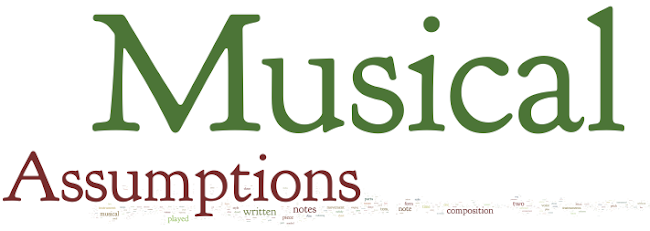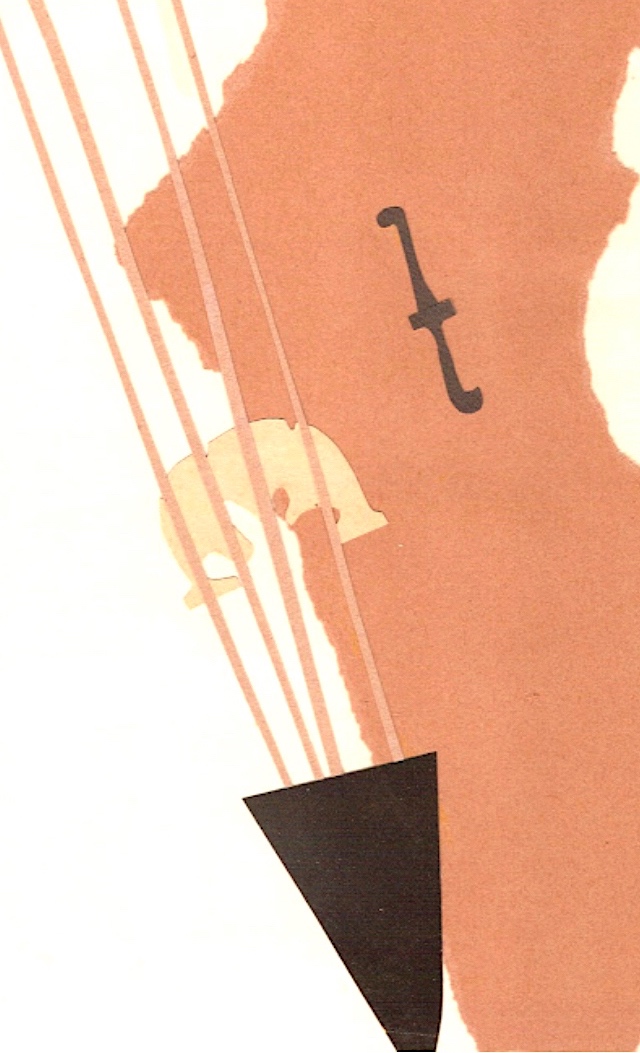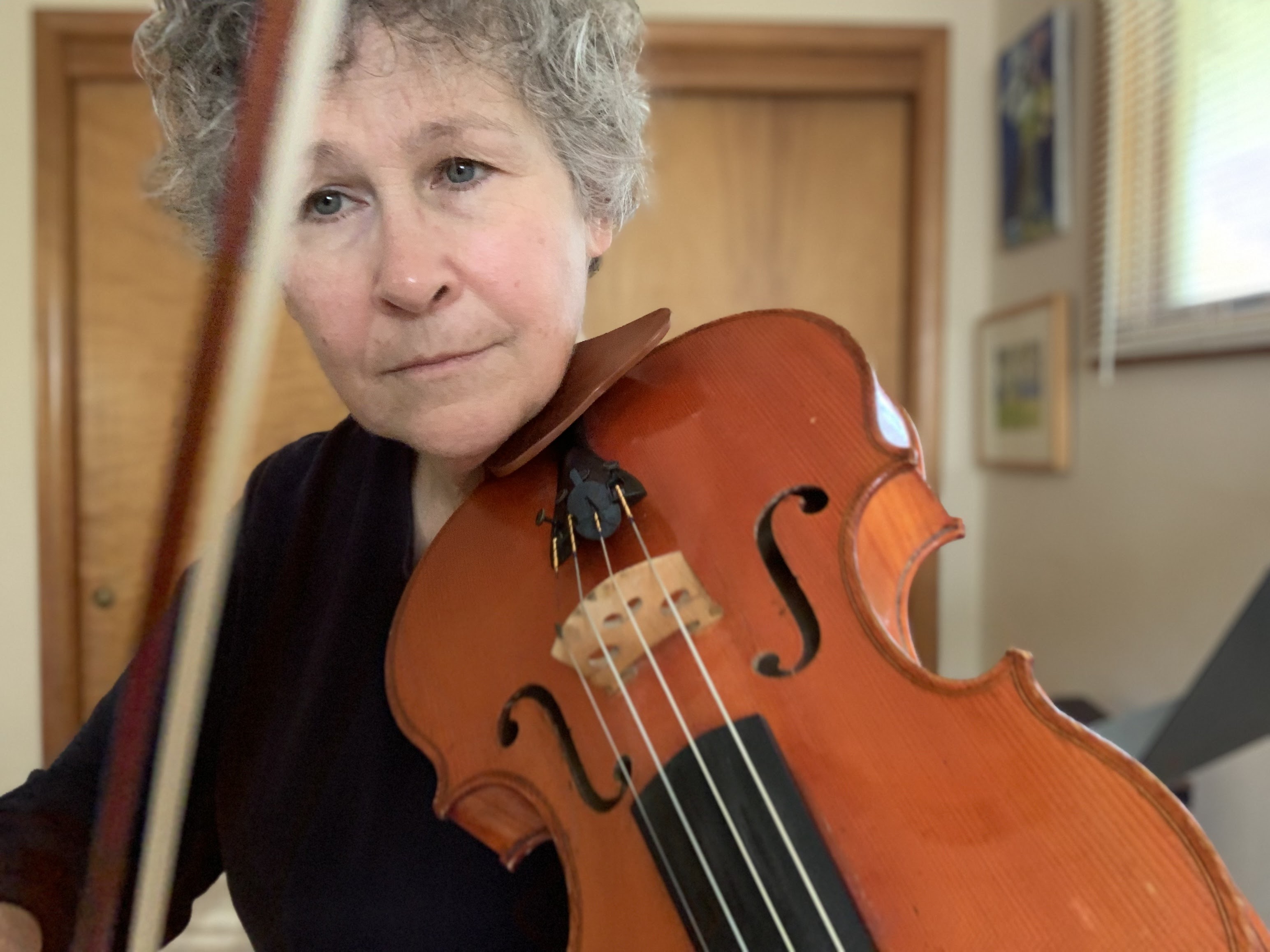Sunday, June 29, 2008
Wagner and The Birds
I imagine that this brilliant marriage of opera and film was put together by Roy.
Atonal Composition with Pablo Casals

I thought I'd share this 1962 drawing by Lorenzo Homar of Pablo Casals surrounded by JFK, Franco, and Dean Rusk, that I found tucked among several pieces of his over at BibliOdyssey.
Thursday, June 26, 2008
Interview with my father
I can't resist putting a link to an interview with my father, who discusses his long career in the BSO on the radio. It is really very entertaining and enlightening, and you also get to hear him play. Yes, I'm very proud of him.
Wednesday, June 25, 2008
Growing up under a musical shadow
I remember the first time I heard the word "personage." Someone (I cannot remember who, although I do remember that he was male and that he was older than I was at the time) introduced me to another person as the daughter of a famous "personage." I thought that this guy was being insulting--suggesting that my father was something other than a person. I spent most of my childhood being referred to as my father's daughter.
I certainly knew from a very young age that he was the principal violist of the Boston Symphony and that he was an important person. He wasn't like other people's fathers. He kept different hours from the other fathers I knew, and other people's fathers didn't spend hours in the basement practicing. Other people's fathers wore suits to work, and mine wore tails. My father's Saturday night concerts were broadcast on live television during the 1970s, and before cable, WGBH was one of only five or six channels that people could watch in the Boston area. A lot of people who were not necessarily "up" on music knew the Boston Symphony Orchestra members by sight. Other families went to the cape in the summer, but our family always went to Tanglewood. I never understood the "lure" of the cape.
When I came of musical age it became important to me for grown up people to appreciate me for what I could do, and not for who my father was, but it was not really possible. My teachers let me slither along in high school without doing much work (I spent my time practicing rather than doing homework), and I got into regional high school ensembles that I probably should not have gotten into because the directors expected me to be "something special" because of who my father was. There were a lot of great high school flutists in the Boston area at the time, and I was a relative beginner when I was playing in the New England Conservatory Youth Symphony and the Massachusetts Youth Wind Ensemble. I know that I got into Juilliard because of who my father was, and there were people at Juilliard who probably wouldn't have even talked to me if it weren't for the fact that I was my father's daughter. It was a serious stigma and it took me a long time to get over it. It took me a couple of years of blogging to "out" myself, but I imagine that regular readers of this blog have not been coming here because of my family legacy.
There were many children of Boston Symphony Orchestra players in my high school. I even sat next to my father's stand partner's son in a few classes. None of the other BSO children in my school were interested in becoming musicians. I envied their "normalcy."
I remember that during my first year at Juilliard there were three daughters of principal violists from major American orchestras who were students. Along with me as the daughter of the BSO's principal violist (me), we had the bassoon-playing daughter of the principal violist of the New York Philharmonic (her flute-playing sister entered Juilliard the next year), and the harpsichord-playing daughter of the former principal violist of the Cleveland Orchestra. I thought it would be cool to form an ensemble, but it never happened.
I have found that as an adult I share a special bond with musical adult children of well-known professional musicians. Many of us had the same childhood, though we had different mothers and fathers. As an adult I still share a musical bond with my father, who is now retired from the BSO and is living in a Boston where he is recognized less often as a local "personage." There is a whole new generation of musicians in Boston's musical foreground, many of them who are younger than I am. Some of the people I grew up with might even think of him as "Elaine's father." Who knows?
I certainly knew from a very young age that he was the principal violist of the Boston Symphony and that he was an important person. He wasn't like other people's fathers. He kept different hours from the other fathers I knew, and other people's fathers didn't spend hours in the basement practicing. Other people's fathers wore suits to work, and mine wore tails. My father's Saturday night concerts were broadcast on live television during the 1970s, and before cable, WGBH was one of only five or six channels that people could watch in the Boston area. A lot of people who were not necessarily "up" on music knew the Boston Symphony Orchestra members by sight. Other families went to the cape in the summer, but our family always went to Tanglewood. I never understood the "lure" of the cape.
When I came of musical age it became important to me for grown up people to appreciate me for what I could do, and not for who my father was, but it was not really possible. My teachers let me slither along in high school without doing much work (I spent my time practicing rather than doing homework), and I got into regional high school ensembles that I probably should not have gotten into because the directors expected me to be "something special" because of who my father was. There were a lot of great high school flutists in the Boston area at the time, and I was a relative beginner when I was playing in the New England Conservatory Youth Symphony and the Massachusetts Youth Wind Ensemble. I know that I got into Juilliard because of who my father was, and there were people at Juilliard who probably wouldn't have even talked to me if it weren't for the fact that I was my father's daughter. It was a serious stigma and it took me a long time to get over it. It took me a couple of years of blogging to "out" myself, but I imagine that regular readers of this blog have not been coming here because of my family legacy.
There were many children of Boston Symphony Orchestra players in my high school. I even sat next to my father's stand partner's son in a few classes. None of the other BSO children in my school were interested in becoming musicians. I envied their "normalcy."
I remember that during my first year at Juilliard there were three daughters of principal violists from major American orchestras who were students. Along with me as the daughter of the BSO's principal violist (me), we had the bassoon-playing daughter of the principal violist of the New York Philharmonic (her flute-playing sister entered Juilliard the next year), and the harpsichord-playing daughter of the former principal violist of the Cleveland Orchestra. I thought it would be cool to form an ensemble, but it never happened.
I have found that as an adult I share a special bond with musical adult children of well-known professional musicians. Many of us had the same childhood, though we had different mothers and fathers. As an adult I still share a musical bond with my father, who is now retired from the BSO and is living in a Boston where he is recognized less often as a local "personage." There is a whole new generation of musicians in Boston's musical foreground, many of them who are younger than I am. Some of the people I grew up with might even think of him as "Elaine's father." Who knows?
Friday, June 20, 2008
Love is Blind

I am now the proud possessor of a viola d'amore, a gift from my father who spent many years trying to understand the instrument, before there was a good deal of scholarship about it, and many years playing its 18th-century solo and chamber repertoire. The head of my instrument has a blindfolded cupid that boldly declares that love is indeed blind. The instrument, however, is indeed beautiful.
The viola d'amore is tuned in the key of D major (or D minor if you lower the F# string to F natural), and has a set of sympathetic strings (I have successfully tuned four of them) that declare the power of tonal harmony. There also seems to be a natural modal tendency for the instrument, and the strings are so close together that it is pretty easy to play parallel intervals and big chords. I have yet to map out the fingerboard, and have every intention of writing for the instrument as soon as I figure out what my drone-filled harmonic improvisations yield, and how best to notate them.
Thursday, June 12, 2008
Off we go!

If you see us on the road somewhere to the far east of Illinois, don't forget to wave! It would be great to travel back in time as well. See you next week.
Early Music Snapshots

Until I learned to use my grandfather's "Brownie" Camera, which my mother kept in a drawer below the china cabinet, nobody ever took photos in our family, and the photos were almost never of me. I'm not quite sure, except for the yearly class pictures taken at school, what I looked like for much of my childhood. Since I don't have any photos for reference, I have "snapshots" in my mind of key moments. Most of them involve music.
My first musical memory was when I was sick in bed and had to miss kindergarten. I was not sick very often, but when I was it was kind of fun, because my mother would bring me things to play with during the course of the day. Our doctor would also come to the house, and he would give me a huge "Charms" lollypop to suck on, which would always make my sore throat feel better. On this particular day, my mother brought me the Hohner recorder that we ordered from an S&H Green Stamp book (I still remember the taste of those stamps). The recorder came with a book, so I taught myself to read music that day. It wasn't a big deal. I do remember digging my teeth into the wood of the recorder, which kind of ruined the instrument, such as it was.
My next "snapshot" comes from first or second grade. We had a half-sized violin in the house that my older brother must have started on. I really wanted to play the violin. I wanted to play the violin so badly that I used to measure my arm on that half-sized violin every week, and I would try to stretch my arm out so that my fingers would be able to reach over the scroll, but they just wouldn't reach. I knew that I couldn't play the violin until I was big enough.
When I was finally big enough my father gave me an "A Tune A Day" book, and I set off to teach myself to play the violin. The notes and fingers made sense at first. The note "B" was played the same way on the violin as it was on the recorder: one finger against the thumb. There is a mixture of elements in this "snapshot." There was the room in the house that we rented in Lenox every summer that had toy soldiers on the wallpaper where I propped up my "A Tune A Day" book on the desk. There was also my grandmother, who must have been visiting at the time, and the card game "Pisha Peysha" that we used to play.

My next "snapshot" is in the post I wrote about playing the Euphonium, after which the snapshots become more blurred and more complicated with the onset of particular circumstances of childhood. I chronicled some highlights of my early adolescence with my grandfather's Argus camera, which inhabited the same china cabinet as the Brownie (it is uncanny that pictures of these intimate instruments can be found on line), but it was stolen when I was around 15, and I lost all interest in photography after that.
Tuesday, June 10, 2008
My Afternoon with the Euphonium

I do have this "thing" for the euphonium. I wonder if it comes from the time that I, as a third grader, sat down (cause that's what you do with the instrument) with my music teacher Miss Humphrey after school one afternoon, and learned how to play what she called "the bass horn." The instrument I played looked a great deal like the one in this picture, but it had a mouthpiece. I imagine that my teacher found the instrument somewhere in the music room of my old school. The "bass horn" was cold, and it was really heavy in my hands and lap. I remember how horrible it smelled and how awkward it was to play: the buzzing thing was very foreign to my young lips. It also required reading the bass clef, which was really pushing the envelope for me at the time.
It was still fun, and I loved spending afternoons after school with my teacher. I recall only spending one afternoon with the "bass horn," and from that single experience I have ultimate respect for anyone who can play the instrument beautifully, or even competently. The first time I heard it played really beautifully was in the middle of a Holst Suite that we played in high school band (I can't remember the name of its player, but I do remember that he also played the viola). I always get a special thrill every time I hear a euphonium solo in any orchestral piece. I also love the name of the instrument. Euphonium sounds so, well, euphonius. I think it is a serious improvement over "bass horn."
I am proud to have contributed two pieces (thus far) to the repertoire, the latest of which I have just put on my thematic catalog. It is a work for euphonium and piano, and is dedicated to the British euphonium soloist Charley Brighton.
Saturday, June 07, 2008
Money and Music
I am torn about music and money. As the child of a professional musician, I appreciate the value of performing musicians getting paid for the work that they do. I expect to get paid for the work I do as a performing musician, and I certainly appreciate getting paid for teaching, which is sometimes harder work than performing. I appreciate commissions, of course, and I appreciate getting ASCAP awards, but I have a problem with the whole value versus cost element of the music business and the way it relates to me as a composer. There is, honestly, no better "payment" for me than hearing a good performance of a piece I have written. Money is just money. Music is different. The times, they are a-changing.
I appreciate publishers taking care of the physical aspects of printing music like using good paper, professional cover design, good ink, and proper mailing materials. I certainly appreciate the business aspects like copyright filing, record keeping, taxes, and the occasional possibility of publicity, but there is something inside me that likes the idea of music being available for free for anyone who wants to play it, skipping the business and tax aspects altogether.
For a while, at least, I will be offering my newly-written music to anyone who wants to play it. There is no difference in quality between the music that I have chosen to have published and the music that I choose to offer for free download. You are certainly welcome to go to my American Music Center page to see the PDF files I have available for download. I'll be putting more on in the near future. I'll also put links to them on my Thematic Catalog.
I appreciate publishers taking care of the physical aspects of printing music like using good paper, professional cover design, good ink, and proper mailing materials. I certainly appreciate the business aspects like copyright filing, record keeping, taxes, and the occasional possibility of publicity, but there is something inside me that likes the idea of music being available for free for anyone who wants to play it, skipping the business and tax aspects altogether.
For a while, at least, I will be offering my newly-written music to anyone who wants to play it. There is no difference in quality between the music that I have chosen to have published and the music that I choose to offer for free download. You are certainly welcome to go to my American Music Center page to see the PDF files I have available for download. I'll be putting more on in the near future. I'll also put links to them on my Thematic Catalog.
Tuesday, June 03, 2008
Medieval Hit Parade
I made some arrangements of two chestnuts of secular Medieval Music for the Darkwood Consort a while ago, and thought I'd share them here. You'll see (and hear) why Colin Muset's When I See Winter Return and the Lamento di Tristano (by an unknown composer) have been around for centuries.
Subscribe to:
Posts (Atom)




